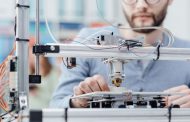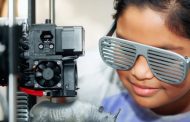3D printed cartilage made from nanocellulose and human cells combined could be about to change facial reconstruction surgery forever.
American Process Inc. and Swansea Medical School have announced a Joint Development Agreement that they hope will make a difference to thousands of patients around the world each and every year.
Facial injuries, disfigurement and cancer can be some of the most difficult for patients to cope with. Not only do they have to deal with the pain, they are left with lifelong reminders that they simply cannot hide and this can have a serious and lasting impact on their self-esteem. So any initiative that can help these patients lead a happier life
Nanocellulose does work, we think…
The ReconRegen group in Swansea had already validated tests that showed nanocellulose can be printed and supports human tissue, so this is a viable proposition as a scaffold. The same team has also produced encouraging results with printed living cells and this research does look good.
Nanocellulose has a lot of properties that could make it ideal as a bioink. It holds a lot of water and forms shear-thinning gels that print easily and swiftly turn into a firm gel-like 3D structure upon deposition. Once it dries, nanocellulose forms a dense, smooth and exceptionally strong structure. It is also non-cytotoxic, which means it can be implanted relatively easily. Read More…





